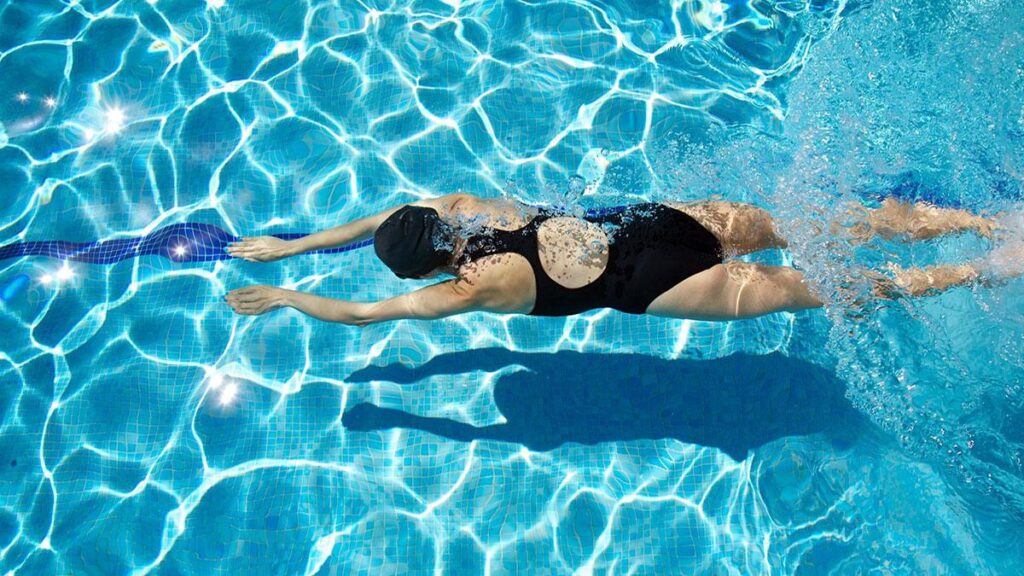Swimming is widely celebrated as an excellent form of exercise, known for its cardiovascular and full-body conditioning benefits. However, beyond the obvious physical advantages, this popular aquatic activity harbors a range of lesser-known perks that often go unnoticed. From mental health improvements to unique therapeutic effects, swimming offers a wealth of hidden benefits that contribute to overall well-being. In this article, we delve into 10 surprising advantages of swimming that may inspire both seasoned swimmers and newcomers to dive deeper into this refreshing and multifaceted exercise.
Health Advantages Beyond the Surface: How Swimming Boosts Mental and Physical Wellbeing
Swimming is more than just a physical exercise-it’s a powerful catalyst for mental rejuvenation. Immersed in water, the body experiences a natural release of endorphins, which significantly reduces anxiety and depression symptoms. The rhythmic strokes and steady breathing patterns practiced during swimming promote mindfulness, allowing individuals to mentally disconnect from daily stressors and find a meditative flow. Experts also note that the full-body sensory engagement in the aquatic environment enhances cognitive function and sharpens memory, making swimming a holistic workout for both brain and body.
On the physical front, swimming offers a unique combination of cardio and resistance training, beneficial to all age groups. It improves circulation, strengthens the heart, and increases lung capacity without placing undue stress on joints. Additionally, the buoyant properties of water support improved posture and flexibility, while cooling effects help regulate body temperature during intense workouts. Below is a concise overview of how swimming influences key wellness markers:
| Benefit | Effect on Body | Effect on Mind |
|---|---|---|
| Endorphin Boost | Reduces pain, improves mood | Elevates happiness, lowers anxiety |
| Improved Circulation | Enhances heart health | Supports mental clarity |
| Low Impact Resistance | Builds muscle, protects joints | Encourages persistence and focus |
Unlocking the Power of Low-Impact Exercise for Joint Health and Rehabilitation
Engaging in low-impact exercise such as swimming facilitates enhanced joint mobility without imposing excessive strain, making it an ideal choice for individuals recovering from injury or managing chronic joint conditions. The buoyancy of water supports body weight, effectively reducing the gravitational load on joints. This allows for a greater range of motion and less pain during movement, encouraging consistent physical activity even for those with arthritis or post-surgical limitations. Moreover, the resistance of water provides a natural form of strength training that gently tones muscles surrounding the joints, thereby improving stability and reducing future injury risk.
Key advantages include:
- Minimized impact forces easing joint stress
- Enhanced circulation aiding in inflammation reduction
- Improved muscular endurance supporting joint alignment
- Natural hydrotherapy benefits promoting pain relief
| Exercise Type | Joint Impact Level | Rehabilitation Benefits |
|---|---|---|
| Swimming | Low | Restores mobility & reduces pain |
| Cycling | Moderate | Strengthens muscles & improves range |
| Walking | Variable | Boosts joint flexibility & endurance |
Expert Tips to Maximize Your Swimming Routine for Endurance and Stress Relief
To truly elevate your swimming routine, focus on a mix of steady pacing and interval training. Alternating between moderate laps and short bursts of speed helps build cardiovascular endurance while keeping your muscles engaged. Incorporating breathing exercises during your swim not only enhances oxygen efficiency but also promotes mental calmness, effectively reducing stress levels. Remember, consistency is key-scheduling swim sessions at least 3-4 times a week creates a rhythm that benefits both body and mind.
Beyond physical techniques, small lifestyle tweaks can amplify results:
- Warm-up stretches before entering the pool to prevent injury and increase flexibility.
- Post-swim cool-down with gentle floating or slow laps to ease tension and relax muscles.
- Hydration and nutrition tailored to endurance sports, with a focus on electrolytes and lean proteins.
| Focus Area | Recommended Practice | Benefit |
|---|---|---|
| Interval Training | 3 x 50m sprints with rest | Boosts stamina and speed |
| Breathing Control | 4 strokes inhale, 6 strokes exhale | Enhances relaxation |
| Cool-Down | 5 min slow freestyle | Reduces muscle soreness |
To Wrap It Up
In uncovering these 10 hidden benefits of swimming, it becomes clear that this popular activity offers far more than just a way to cool off or stay fit. From boosting mental health and enhancing joint mobility to improving sleep quality, swimming presents a multifaceted approach to well-being that often goes unnoticed. As research continues to highlight these advantages, incorporating swimming into regular routines may prove to be a simple yet effective strategy for promoting overall health. For those seeking a low-impact, enjoyable form of exercise with a host of covert perks, the pool might just be the ideal place to dive in.





